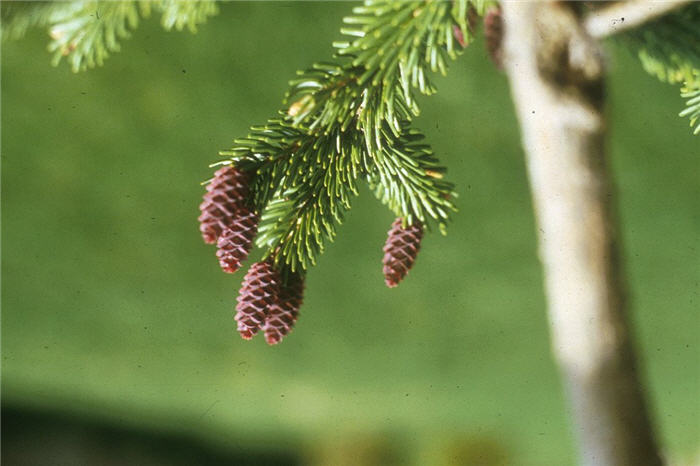| Botanical Name: Picea omorika | |
| Common Name: Serbian Spruce |

-
Anatomy
-
Culture
-
Design
Plant Type
Tree, Conifer
Height Range
40-60'
Flower Color
n/a
Flower Season
n/a
Leaf Color
Dark Green
Bark Color
Brown, Grey
Fruit Color
Brown, Purple
Fruit Season
Winter, Fall, Persistent
Sun
Full, Half
Water
Medium
Growth Rate
Slow
Soil Type
Clay, Loam, Rocky
Soil Condition
Average, Rich, Poor, Well-drained, Dry
Soil pH
Acid, Neutral, Basic
Adverse Factors
n/a
Design Styles
Formal, Japanese, Mediterranean, Ranch, Spanish, Woodland
Accenting Features
Specimen
Seasonal Interest
Winter
Location Uses
Background, Walls / Fences
Special Uses
Screen, Wind Break, Small Spaces
Attracts Wildlife
Birds
Information by: Stephanie Duer
Photographer:
Photographer:
-
Description
-
Notes
Serbian spruce is a slow-growing evergreen conifer with a narrow, pyramidal habit, reaching (eventually) 40 to 60 feet tall but only 15 to 20 feet wide. It has glossy, dark green needles that have a silvery white band on the underside, giving it a subtle bi-colored effect. Young cones are egg-shaped, about 2 inches in length, and are purple, maturing to a reddish brown. Use singularly as a specimen or in groups.
Grow in well-drained soil in full sun to part shade. Prefers rich, loamy soils, but is adaptive to poorer, drier ones. Better tolerance for heat, drought, and air pollution than most other species of spruce. Hardy to USDA Zone 4.